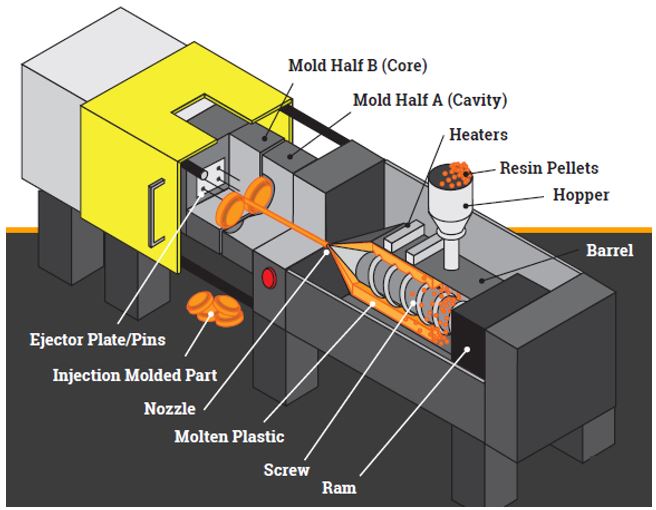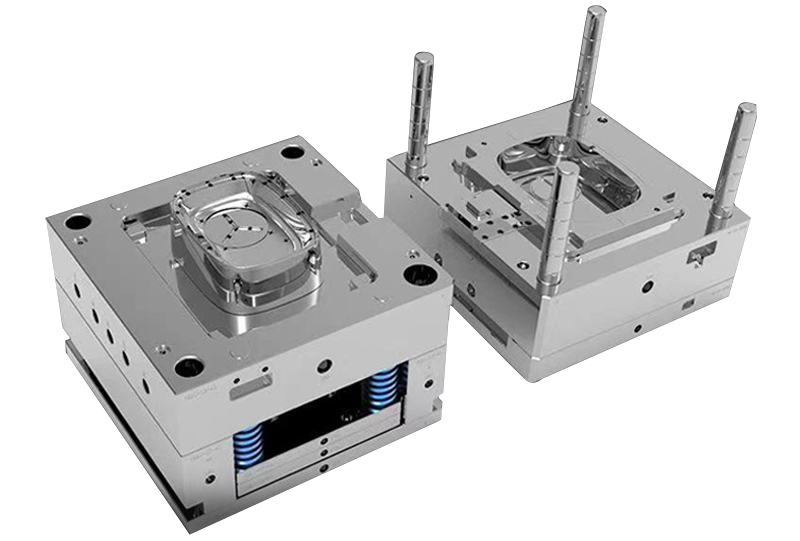Recognizing the Plastic Injection Molding Refine for High-Quality Production
Recognizing the Plastic Injection Molding Refine for High-Quality Production
Blog Article
Understanding the Fundamentals of Plastic Shot Molding Processes
Plastic injection molding acts as a foundation of modern-day manufacturing, offering a methodical method to creating intricate components with accuracy. This process not only includes the fundamental actions of melting and injecting materials into molds however additionally involves a nuanced understanding of different affecting aspects, such as temperature level and pressure. As industries progressively require effectiveness and top quality, the intricacies of this approach end up being much more essential. Exploring these important aspects might expose exactly how even small changes can cause substantial renovations in manufacturing end results, questioning regarding the capacity for development in this well established process.
What Is Plastic Injection Molding?
Plastic injection molding is an extensively utilized production process that changes polycarbonate and thermosetting products into exact and complex forms. This technique is preferred for its ability to create high quantities of identical components with outstanding accuracy, making it a vital method in different sectors, including auto, durable goods, and clinical devices.
The process entails thawing the chosen plastic material and infusing it right into a mold under high pressure. The mold, made to the specifications of the preferred component, permits the liquified plastic to form as it cools and strengthens. Once the material has actually hardened, the mold is opened, and the finished element is expelled.
Plastic shot molding supplies several advantages, consisting of lowered waste, uniformity in production, and the capability to integrate complex layouts that might be testing with various other manufacturing methods. Furthermore, it supports a broad variety of products, each giving one-of-a-kind buildings that can be customized for specific applications. As industries continue to innovate, plastic injection molding continues to be at the forefront, enabling the development of sophisticated products that meet developing consumer demands.
The Injection Molding Refine
The shot molding procedure is an advanced method that includes a number of essential stages to produce top quality plastic components. Plastic pellets are fed into a warmed barrel where they are melted right into a thick fluid. This molten plastic is then infused under high stress into a precision-engineered mold, which forms the product into the desired form.
As soon as the mold is filled, the plastic is allowed to cool down and strengthen, taking the form of the mold cavity. Air conditioning time is vital, as it impacts the cycle time and the final homes of the molded component. After adequate air conditioning, the mold and mildew opens, and the ended up element is expelled utilizing ejector pins.

Materials Utilized in Shot Molding
Different products can be used in the injection molding process, each offering distinct buildings that accommodate details applications. One of the most commonly used materials include thermoplastics, thermosetting plastics, and elastomers.

Thermosetting plastics, like epoxy and phenolic materials, undergo a chemical adjustment during the treating procedure, resulting in an inflexible, inflexible structure. These products are perfect for applications calling for high warm resistance and structural stability, commonly utilized in automotive components and electric insulators.
Elastomers, including silicone and rubber-based products, offer adaptability and resilience. Their distinct buildings make them suitable for applications that demand flexibility, such as gaskets and seals.
In addition, specialty materials like bio-based plastics and composites are getting grip for their ecological advantages and enhanced performance qualities, expanding the range of shot molding applications in numerous sectors. Recognizing the residential or commercial properties of these see post materials is vital for picking the ideal kind for specific projects.
Advantages of Injection Molding
Shot molding attracts attention as a highly reliable production procedure browse around this web-site that supplies countless benefits for generating complicated components with precision. One of one of the most substantial advantages is the capability to produce elaborate styles that would be challenging or impossible to attain with other approaches (Plastic Injection Molding). The process allows for limited resistances and comprehensive attributes, making sure high-quality elements
In addition, shot molding is recognized for its fast production capabilities, making it an optimal selection for high-volume manufacturing. Once the mold is developed, components can be generated swiftly, reducing preparations and increasing general efficiency. This efficiency not just reduces production expenses but likewise supplies an one-upmanship in the marketplace.
The convenience of materials utilized in injection molding better enhances its allure. A vast array of thermoplastics and thermosetting polymers can be utilized, enabling makers to select products that best meet their specific needs, including versatility, strength, and warm resistance.
In addition, the process lessens waste, as excess product can commonly be reused and recycled. This sustainability facet adds to a lowered environmental effect, making injection molding a liable manufacturing selection. Generally, the benefits of injection molding make it a recommended method for many sectors.
Aspects Impacting Item High Quality
While many variables can influence item top quality in injection molding, comprehending these aspects is important for attaining optimum results. Trick aspects include product option, processing specifications, and mold layout.
Product selection plays an essential duty, as different polymers show distinct properties that impact flowability, stamina, and thermal stability. Poor product option can lead to flaws such as warping or insufficient filling.
Handling parameters, including temperature level, cycle, and stress time, should be carefully controlled. Variants in these settings can lead to disparities partly measurements and surface area coating. Exceedingly high temperature levels may cause degradation of the polymer, while inadequate stress can result in brief shots.
Mold layout is similarly essential, as it identifies the circulation of the molten plastic and the cooling procedure. Badly made mold and mildews may bring about unequal air conditioning prices, causing dimensional errors and residual stresses.

Final Thought
In final thought, plastic shot molding serves as an important production procedure that allows the effective production of top notch elements. Mastery of the injection molding process, consisting of the understanding of products and the influence of different elements on product quality, is essential for attaining optimum outcomes. The advantages of this method, such as cost-effectiveness and layout adaptability, more highlight its importance across numerous sectors, solidifying its status as a preferred selection for high-volume manufacturing.
Plastic injection molding serves as a foundation of modern manufacturing, giving a methodical strategy to generating complicated elements with precision.Plastic shot molding supplies a number of advantages, consisting of minimized waste, consistency in manufacturing, and the ability to incorporate detailed styles that might be challenging with other producing methods (Plastic Injection Molding). As sectors continue to introduce, plastic injection molding continues browse this site to be at the leading edge, enabling the advancement of advanced items that meet progressing consumer needs
The shot molding process is an innovative method that entails a number of vital stages to generate premium plastic parts.In final thought, plastic shot molding serves as an essential manufacturing procedure that enables the effective manufacturing of top quality elements.
Report this page